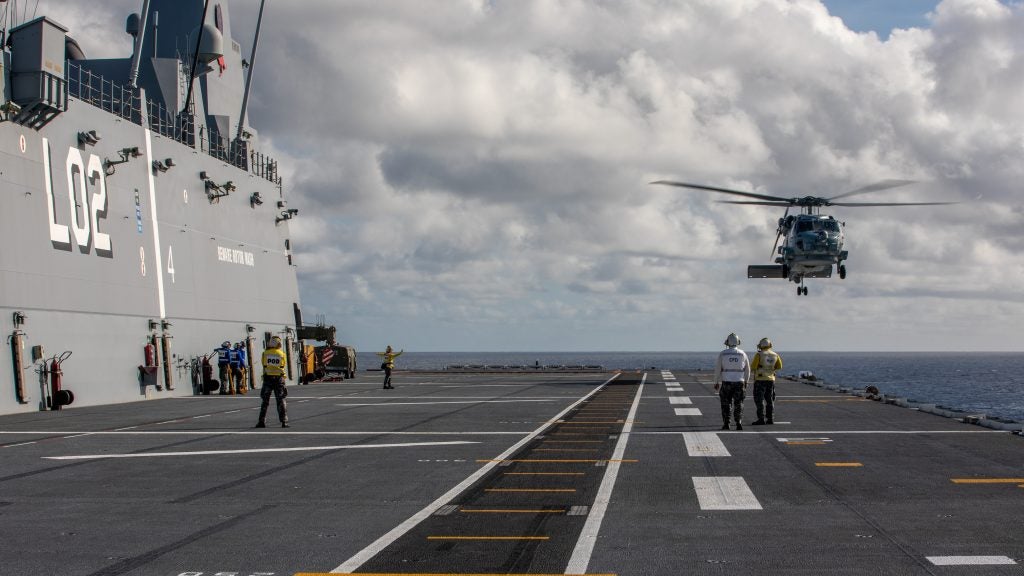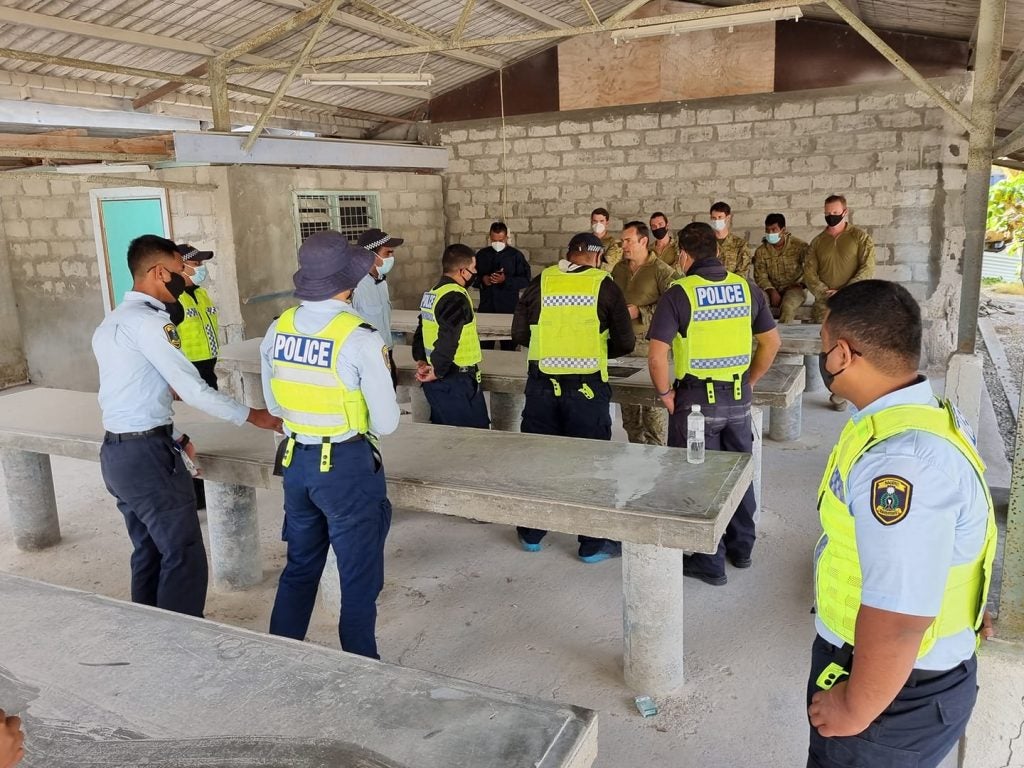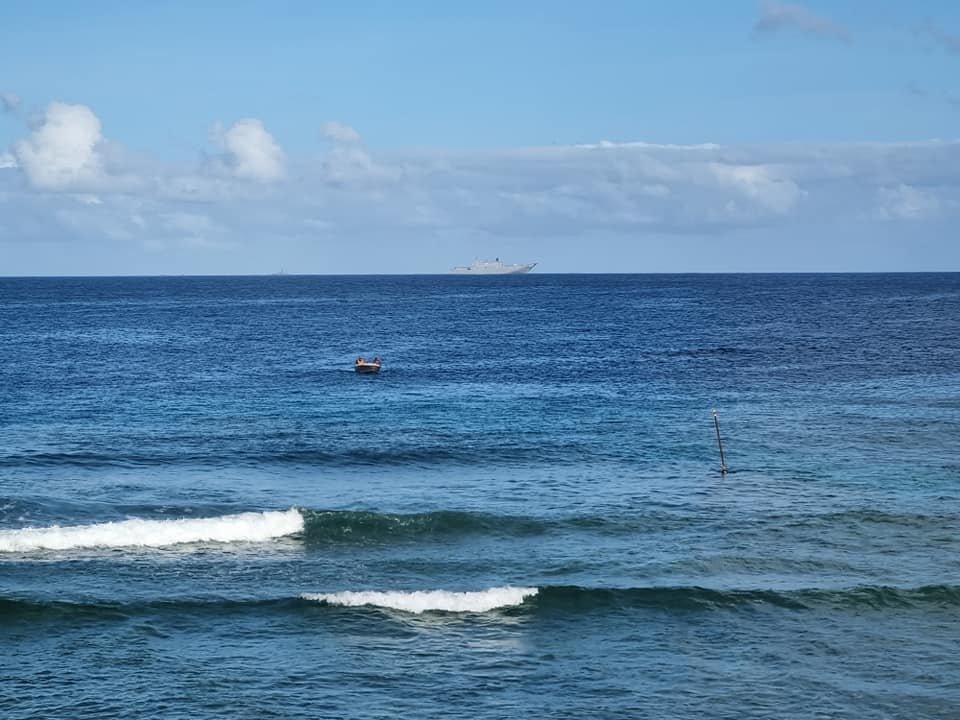After RIMPAC, Australian Warships visit Nauru
Australian warships HMAS Canberra (L 02) and HMAS Warramunga (FFH 152) arrived off the coast of Nauru on 17 August. The two vessels, which are currently in the midst of a regional presence deployment, visited Nauru to support Operation Render Safe. Operation Render Safe is the Australian Defence Force’s ongoing effort to dispose of Unexploded Ordnance (UXO) throughout the South Pacific.
“Operation RENDER SAFE is the Australian Defence Force’s (ADF) series of activities that aims to safely dispose of World War II-vintage explosive remnants of war from South Pacific island nations. Operations occur approximately annually, or in response to an urgent request from a Pacific Island nation.”
Typically, operations to dispose of UXOs in other parts of the Pacific don’t require the presence of a landing helicopter dock (LHD), however, due to Nauru’s limited infrastructure HMAS Canberra (and her embarked helicopters) were utilised as a risk-reduction method.

According to the Nauru Police Force:
“Australian navy ship HMAS Canberra can also be seen off the coast in Aiwo, while HMAS Warramunga is further offshore and not visible. The aircraft and ships are here to support the operation due to the activity being dangerous for the personnel involved and to quickly respond to any calls for assistance by the team conducting the disposal.”
Personnel from the Nauru Police Force (NPF), Australian Federal Police (AFP), and Royal Solomon Island Police Force (RSPIF) took part alongside their Australian Army and Navy counterparts. According to the Department of Defence, the actual disposal of UXOs is typically the responsibility of Army EOD teams or RAN clearance divers.

In total, over the two-day operation, ten UXOs were safely detonated. Two of the ten were considered “significantly dangerous”.
UXOs mainly left over from World War Two, are a significant, life-threatening issue throughout the Pacific. While much of the ordnance was left behind by Japan and the United States, both countries have done little to aid in the clean up, with most UXO work funded by Australia and Aotearoa New Zealand.

